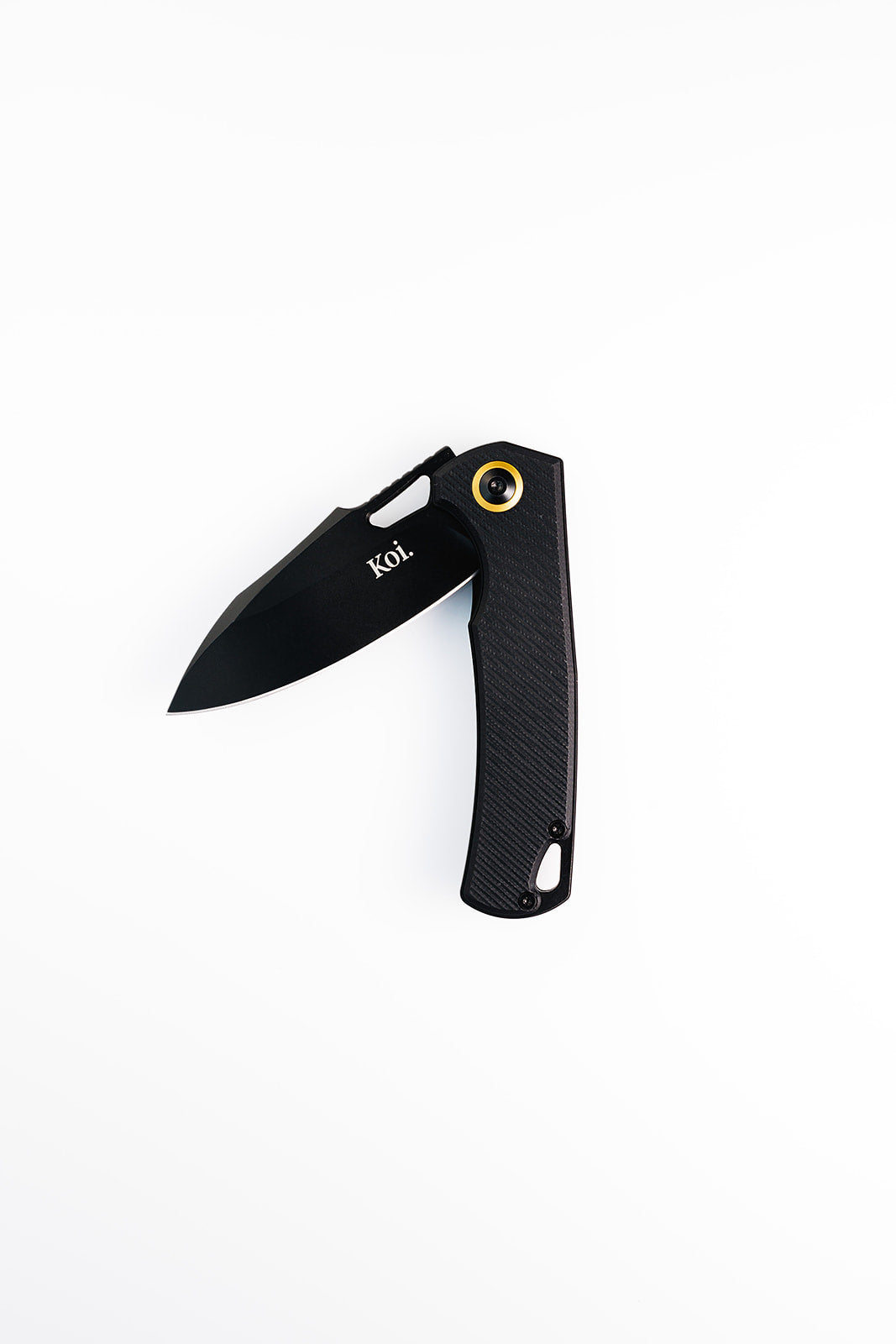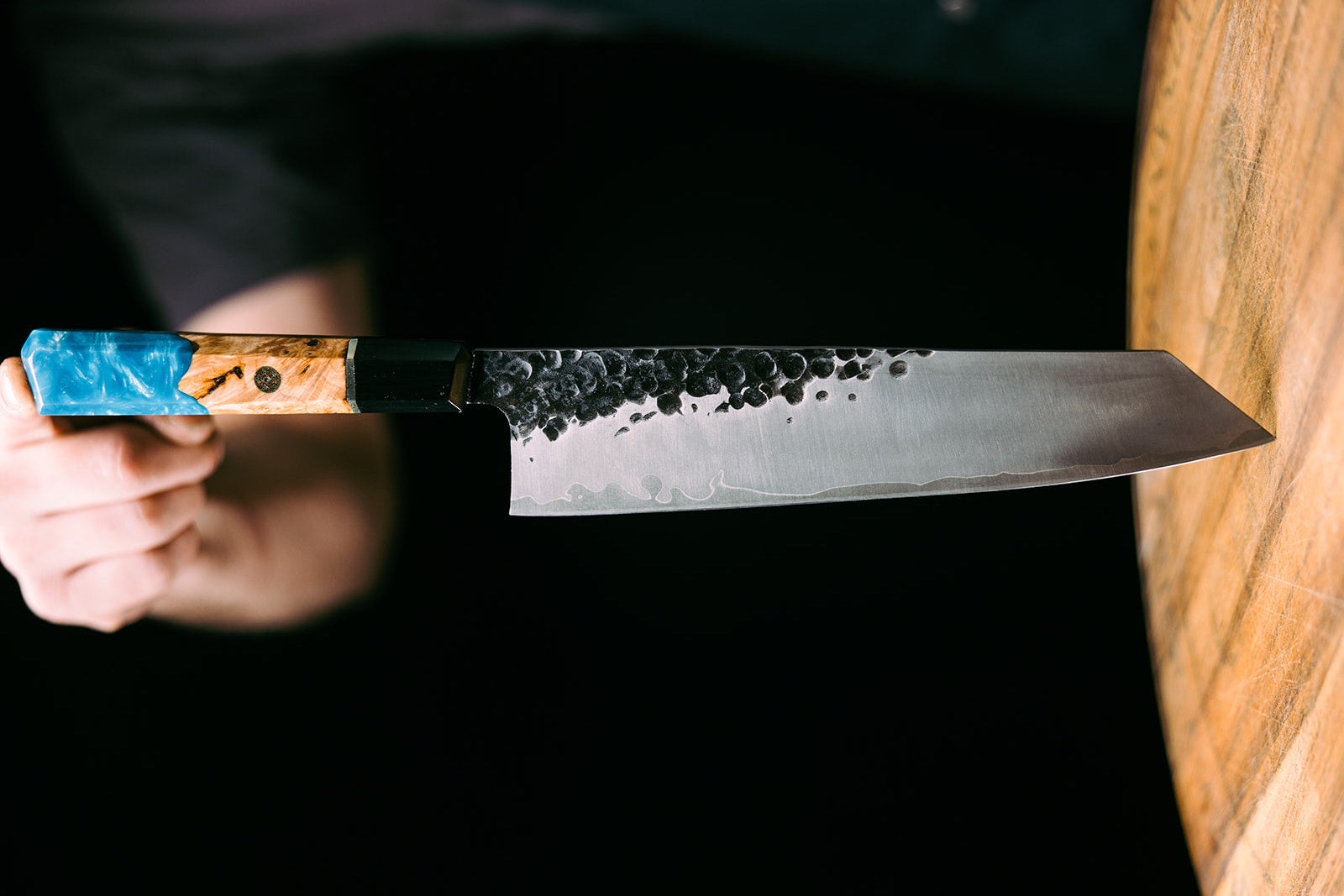Click here to see some of the Japanese Steel we're working with
Where to start is the biggest issue .... below are some of the options (our opinions which change depending on who you talk to....)
6. CROMOVA 18
The CROMOVA18 is another classically crafted steel blended over the past few decades by master crafting factory Yoshikin.
Yoshikin manufactures high grade steel for blades made possibly the worlds best known Japanese brand - Global Knives.
5. HAP40 - Tweaking the ingredients
HAP-40 is a recent reformation of ultra-hard knife blade steel. The changes are a reduction in Chromium (typically set 12-15% moved to 3.7-4.7%) which typically is used to improve corrosiveness and replacing it with increases in Cobalt, Vanadium, Tungsten and Molybdenum - the types of materials you can find in car engines :)
HAP-40 is produced by Hitachi factory in Japan.
The make up of the ingredients is as follows:
| Elements | |
| Fe | ~75% |
| C | 1.27-.1.37% |
| Cr | 3.7-4.7% |
| Mo | 4.6-5.4% |
| V | 2.8-3.3% |
| Co | 7.5-.8.5% |
| W | 5.60-6.40% |
| P | - |
| S | - |
| Quenching Hardness | ~HRC65+ |
4. Aogami - Blue Super Steel
Posted by Ramon Elzinga on
Aogami Blue Super Steel is another high end knife steel production by Hitachi.
Aogami is a carbon driven steel so whilst it will be very hard it will also be more likely to be corrosive - so for these knives you need to take care of them.
You will notice a much lower contribution of Chromium when compared with classics like VG10 or AUS10.
The steel composition is as follows:
| Elements | Aogami Steel |
| C | 1.40-1.50 |
| Si | 0.10-0.20 |
| Mn | 0.20-0.30 |
| Ni | - |
| Cr | 0.30-0.50 |
| Mo | - |
| W | 2.00-2.50 |
| V | 0.30-0.50 |
| Co | - |
3. ZDP-189 / MC66 Steel - 3% Carbon Concentration
ZDP-189 is an ultra high carbon steel knife manufactured by Hitachi Steel. ZDP is the highest carbon concentration (~3%) meaning it will be extremely hard (the hardest) blade tip on the planet however it will have slightly higher corrosion and reduced ductility which may lead to chipping.
High end well known knife brands such as Miyabi (owned by Zwilling who terms the same metal as MC66) use this ultra high carbon steel composition when making Miyabi knife collections.
The ZDP-189 / MC66 has the following specs:
| Elements | ZDP-189 / MC66 |
| Fe | ~75% |
| C | 3% |
| Cr | 20% |
| Mo | 1.40% |
| V | 0.10% |
| Mn | 0.50% |
| Si | 0.40% |
| Co | - |
| Quenching Hardness | HRC60 + |
If you're after ultra hard and have time to hone and stone your knife from time to time this is one of the best steels to use - only be careful that the knife needs (like a Ferrari needs) a little more care.
2. AUS10 / AUS8 / AUS6 - The best if Damascus is what you're after....
Posted by Ramon Elzinga on
These steels are made by Aichi Steel, a subsidiary of the Toyota group who manufacturers roughly 40% of Japanese steel.
AUS10 is close to the VG10 however it has slightly less Chromium (1% less) and has added Manganese (0.5), Nickel (0.49) and traces of Silicon and Phosphorus. Much like Chromium, Nickel helps reduce corrosiveness of the steel and the added Manganese hardens the steel and reduces the resistence to wear. This has seen it used to adjust steel used for train tracks, safes, prison bars etc however within the knife a smaller amount is used.
The AUS10 is commonly used in high end knives and is favorite for when making a Damascus finish (by adding acid at the end - Damascus finish is created by what is done with the steel not which steel are you using).
The steel cauldron is made up like this:
| Elements | AUS10 |
| Fe | ~81% |
| C | 0.95-1.1% |
| Cr | 13.00-14.50% |
| Mo | 0.1-0.31% |
| V | 0.1-0.27% |
| Co | - |
| Ni | 0.49% |
| Mn | 0.50% |
| Si | 0.10% |
| S | 0.03% |
| P | 0.04% |
| Quenching Hardness |
HRC60 + |
1.VG10 - The worlds most popular high carbon steel
VG10 is made by Takefu Special Steel Company.
VG10 or "V Gold 10" has become the worlds most popular high carbon yet anti-corrosive steel. It is used by most high end knife brands, blacksmiths and blade makers all over the world however the vast majority of consumption remains in Japan.
As with all steels it is made predominantly from iron (circa 80% of 4/5th). It has a high carbon content which adds to the hardness of the blade. Typically stainless steel will hold a maximum of 0.005% however VG10 will have at least twice that amount. This increase in carbon content (after heat treatment) will significantly decrease ductility. This basically means that it is less likely to change shape - however if not carefully imposed it can also mean it's more likely to crack.
All-in-all "VG10" knives are usually composed with a core VG10 and cladded on the outside with 440S. This means that the outside (beyond the edge) is completely stainless yet the edge is super hard (HRC 60+). This impressive combination has made VG10 the most popular high end knife steel on the planet (not used in medium or lower end as it is much more expensive).
Within the Knife Mecca itself you will find on blades brought to the market such as Koi Knives and Kasumi - they are a couple of many who use this sought after steel to make fine balance between low corrosiveness and blade hardness and ease of sharpening.
The specifications of VG10 are as follows:
| Elements | VG10 / V Gold 10 |
| Fe | ~81% |
| C | 0.95-1.05% |
| Cr | 14.50-15.50% |
| Mo | 0.80-1.20 |
| V | 0.25-0.35 |
| Co | 1.30-1.80 |
| Quenching Hardness |
HRC60 + |



